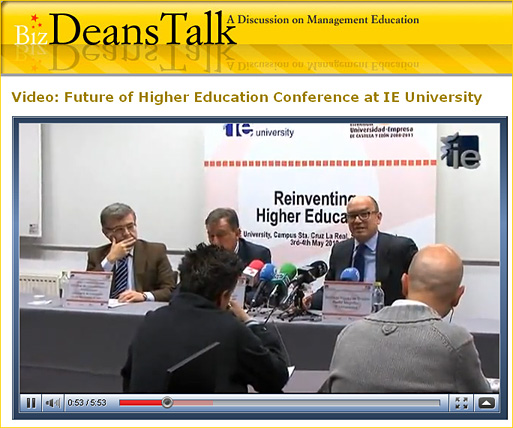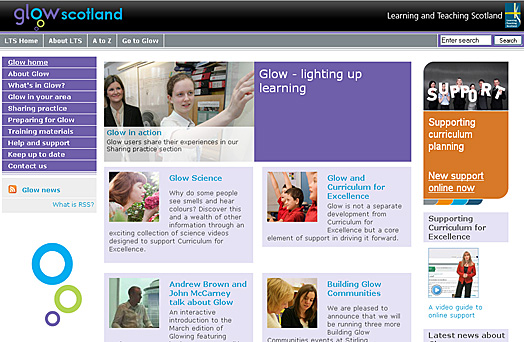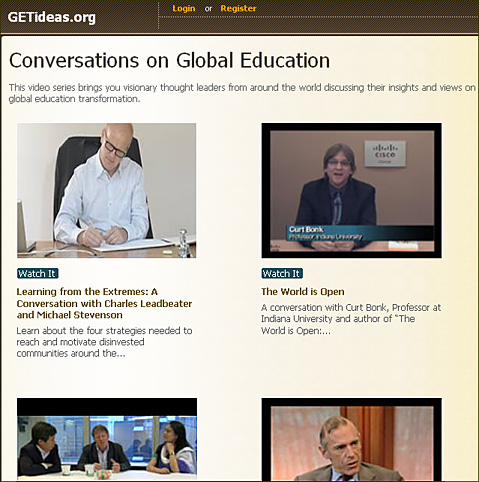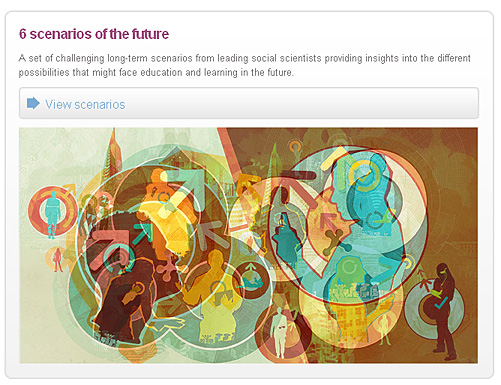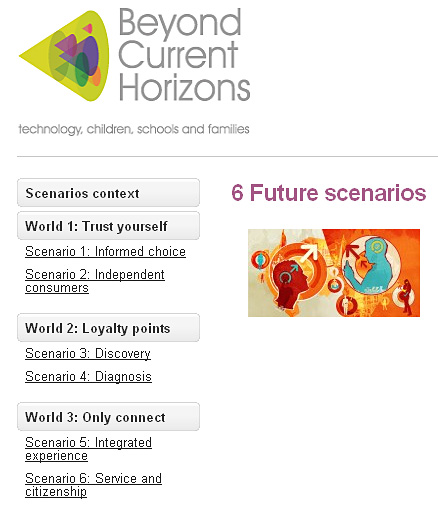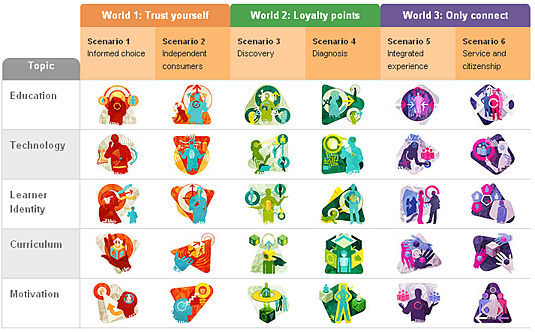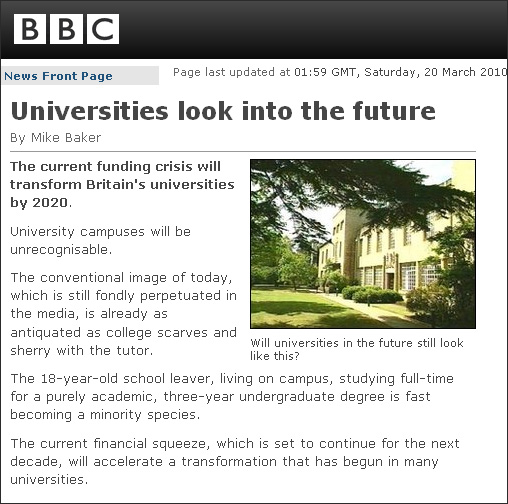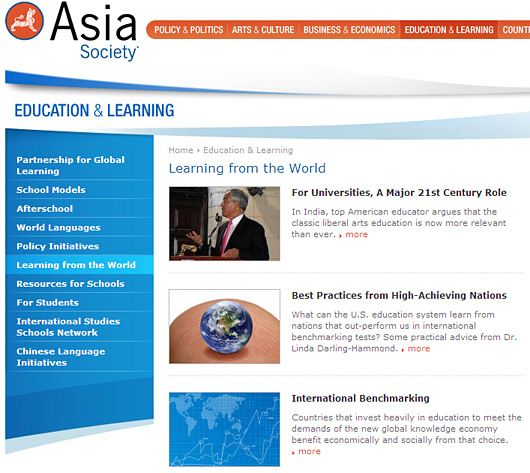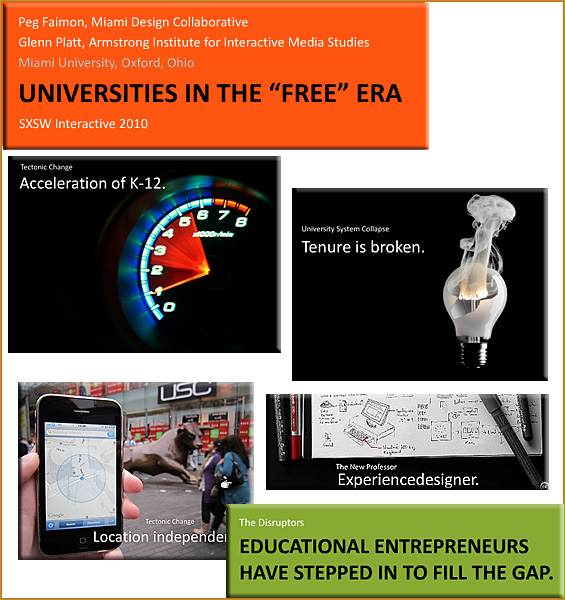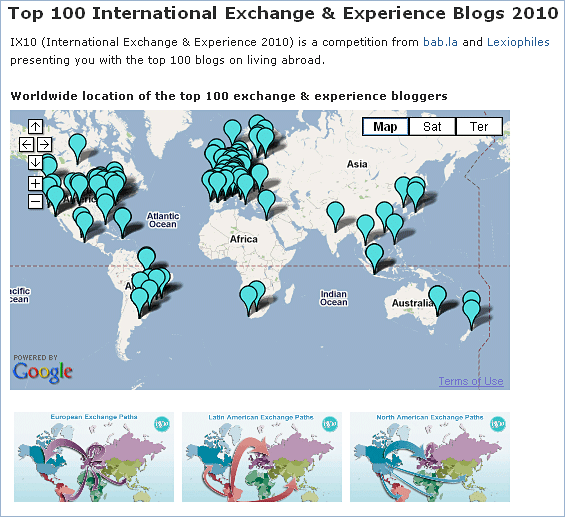GlobalEnglish sees rapid growth for online corporate English instruction — from VentureBeat.com
Which refers/links to:
About the Reinventing Higher Education Conference
A conference organized by IE University, Segovia (Spain), 4th May 2010.
The field of Higher Education is experiencing one of the most fascinating and challenging transformations since the foundation of the first universities eight centuries ago (emphasis here and below by DSC):
• New actors are entering and are supplementing the traditional role of the State and other grand institutions in setting the agenda of education institutions.
• New technologies are reshaping the way knowledge is generated and distributed, including the learning methodologies, the forms of delivery and even the role of professors.
• A new profile of students is entering higher education. The web generation brings new skills and attitudes into class. At the same time, continuous education is becoming a fast-growing segment for many universities.
• The internationalization of education stakeholders and cross-border mobility are key features of the new higher education environment.
• Transnational accreditation and ranking systems may play key role in constructing and signaling the quality of the diverse institutions
• The governance and funding of higher education centers will vary and universities and governments may seek alternative sources of income.
• Universities may become catalysts of innovation and more accountable to society in a number of ways: how research is applied in development and innovation, the connections between university departments and companies as well as the relevance of education for graduates’ careers.
Virtual Symposium examines worldwide growth of online access — eSchoolNews.com
Online learning, open courseware, eBooks, wikis, and many other innovative technologies have forever affected education by connecting any topic in any discipline to any learner in any place. Even individuals in remote communities now can access unlimited information free of charge, if they have an internet connection. This also provides more possibilities for international collaboration, knowledge building, and sharing of best practices.
Drexel University’s School of Education capitalized on these possibilities during its second annual live and online Virtual Symposium, in conjunction with Wainhouse Research and the World Bank Institute’s Global Development Learning Network (GDLN). This year’s Virtual Symposium built upon the theme Education for Everyone: Expanding Access Through Technology.
“This is hauntingly beautiful” — from TipLine – Gates’ Computer Tips
From DSC:
You have got to check out this “virtual choir”! (resource from TipLine – Gates’ Computer Tips)
Not only is this a beautiful piece of music, but an excellent example of a cross-disciplinary project! Includes: art, music, videography, design, and more. Again, how awesome would this be to see on a wall-sized monitor!
I’m a former music teacher who still has a deep passion for beautiful music. I’ve often tweeted about listening to Beibl’s “Ave Maria” sung by the Turtle Creek Chorale when it comes on my itunes. And, I’ve posted about Bobby McFarren and about Perpetuum Jazille singing “Africa” that’s just VERY cool. And, I’ve posted about the Youtube Symphony orchestra and PS22 fifth graders, and the youth orchestra on TED and even a vegetable orchestra. I love beautiful music.
So, when I first heard these two pieces I first LOVED the idea of a virtual chorus – singers from 12 countries contributing virtually to a performance. Now THAT is a VERY cool idea. Then I started to watch the video responses to that video and I found myself completely blown away.
Here is the first video performance. It’s Eric Whitacre’s Virtual Choir – ‘Lux Aurumque’
Global language education: Learning the lingo –– from Edutopia.org
A sampling of schools that take foreign language teaching to task.
2010 Annual Conference Presentations — from The Association of International Education Administrators (AIEA)
International perspectives on higher education funding structures — from GlobalHigherEd.com









